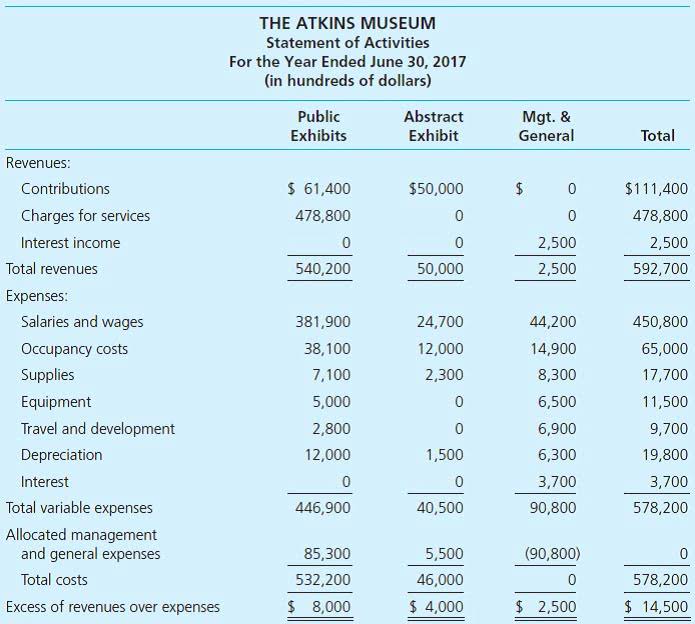
Printing Plus has $100 of dividends with a debit balance on the adjusted trial balance. The closing entry will credit Dividends and debit Retained Earnings. The next step is to repeat the same process for your business’s expenses. All expenses can be closed out by crediting the expense accounts and debiting the income summary. Here you will focus on debiting all of your business’s revenue accounts.
These are general account ledgers that record transactions over the period and accounting cycle. These account balances are ultimately used to prepare the income statement at the end of the fiscal year. Examples of temporary accounts include revenue, expense and dividends paid accounts. Closing entries, also called closing journal entries, are entries made at the end of an accounting period to zero out all temporary accounts and transfer their balances to permanent accounts.
Everything to Run Your Business
The assumption is that all income from the company in one year is held onto for future use. Any funds that are not held onto incur an expense that reduces NI. One such expense that is determined at the end of the year is dividends. The last closing entry reduces the amount retained by the amount paid out to investors. Clear the balance of the expense accounts by debiting income summary and crediting the corresponding expenses. There are four https://www.bookstime.com/articles/cash-flow-forecast; closing revenues to income summary, closing expenses to income summary, closing income summary to retained earnings, and close dividends to retained earnings.

Any remaining balances will now be transferred and a post-closing trial balance will be reviewed. If the Post-Closing Trial Balance is not balanced and the Pre-Closing Trial Balance is balanced, then there were errors in the Closing Entry Process. The following would be an example of a trial balance; you can see that there are no temporary accounts and that all accounts have a natural number balance. The Third Step of Closing Entries is closing the Income Summary Account. Now, if you realize from steps 1 & 2, the balance of the Income Summary is also the same amount as the Net Income.
What are the 4 closing entries?
From this trial balance, as we learned in the prior section, you make your financial statements. After the financial statements are finalized and you are 100 percent sure that all the adjustments are posted and everything is in balance, you create and post the closing entries. The closing entries are the last journal entries that get posted to the ledger.
- From the Deskera “Financial Year Closing” tab, you can easily choose the duration of your accounting closing period and the type of permanent account you’ll be closing your books to.
- These permanent accounts show a company’s long-standing financials.
- The closing entries will mean that the temporary accounts (income statement accounts and drawing account) will start the new accounting year with zero balances.
- Now for this step, we need to get the balance of the Income Summary account.
- As a corresponding entry, you will credit the income summary account, which we mentioned earlier.
- Now, the income summary account has a zero balance, whereas net income for the year ended appears as an increase (or credit) of $14,750.
- Income and expenses are closed to a temporary clearing account, usually Income Summary.
The accounts that need to start with a clean or $0 balance going into the next accounting period are revenue, income, and any dividends from January 2019. To determine the income (profit or loss) from the month of January, the store needs to close the income statement information from January 2019. Whether you’re posting entries manually or using accounting software, all revenue and expenses for each accounting period are stored in temporary accounts such as revenue and expenses. After preparing the closing entries above, Service Revenue will now be zero.
closing entries definition
This will ensure that the balances of those expenses account are transferred to the income summary account. Below are some of the examples of closing entries that can be used to transfer revenue and expense account balances into income summary and from there to the retained earnings. These are general account ledgers that show balances recorded over multiple periods.
The third entry requires Income Summary to close to the Retained Earnings account. To get a zero balance in the Income Summary account, there are guidelines to consider. The income statement reflects your net income for the month of December. Here we see that total expenses for both were $9,650 for January 2020. All accounts can be classified as either permanent (real) or temporary (nominal) the following Figure 1.27. It’s vital in business to keep a detailed record of your accounts.
These journal entries are made after the financial statements have been prepared at the end of the accounting year. A closing entry also transfers the owner’s drawing account (a temporary balance sheet account) balance to the owner’s capital account. The closing entries will mean that the temporary accounts (income statement accounts and drawing account) will start the new accounting year with zero balances.
After the posting of this closing entry, the income summary now has a credit balance of $14,750 ($70,400 credit posted minus the $55,650 debit posted). Notice that the balances in interest revenue and service revenue are now zero and are ready to accumulate revenues in the next period. The Income Summary account has a credit balance of $10,240 (the revenue sum). Income summary is a holding account used to aggregate all income accounts except for dividend expenses. Income summary is not reported on any financial statements because it is only used during the closing process, and at the end of the closing process the account balance is zero.
Guide to Understanding Accounts Receivable Days (A/R Days)
Your car, electronics, and furniture did not suddenly lose all their value, and unfortunately, you still have outstanding debt. Therefore, these accounts still have a balance in the new year, because they are not closed, and the balances are carried forward from December 31 to January 1 to start the new annual accounting period. If your business is a sole proprietorship or a partnership, your next step will be to close your income summary account. You can do this by debiting the income summary account and crediting your capital account in the amount of $250. This reflects your net income for the month, and increases your capital account by $250.
- But if the business has recorded a loss for the accounting period, then the income summary needs to be credited.
- Closing entries prepare a company for the next accounting period by clearing any outstanding balances in certain accounts that should not transfer over to the next period.
- If you’re using the wrong credit or debit card, it could be costing you serious money.
- As part of the closing entry process, the net income (NI) is moved into retained earnings on the balance sheet.
- The $1,000 net profit balance generated through the accounting period then shifts.
A closing entry is a journal entry made at the end of accounting periods that involves shifting data from temporary accounts on the income statement to permanent accounts on the balance sheet. Temporary accounts include revenue, expenses, and dividends, and these accounts must be closed at the end of closing entries the accounting year. To update the balance in the owner’s capital account, accountants close revenue, expense, and drawing accounts at the end of each fiscal year or, occasionally, at the end of each accounting period. For this reason, these types of accounts are called temporary or nominal accounts.


コメント